This week’s Mobile World Congress (MWC) in Barcelona has seen a flurry of handset announcements boasting, amongst other features, more megapixels, support for HD video, OLED screens and touchscreen UIs. Here’s five handsets that caught my eye.
Samsung Omnia HD
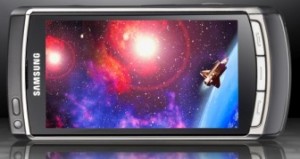 Not content with competing on megapixels alone, the Omnia HD, as the name suggests, is the first smartphone to both record and playback High Definition video. And that’s proper High Def (720p) unlike the slightly misleadingly named Touch HD from HTC. However, there’s much, much more to like about the Omnia HD, not least its 3.7″ AM OLED touch screen, which if the screen on Nokia’s N85 is anything to go by (I have one on loan right now), will be absolutely stunning. The device also has full DLNA certification, meaning that it’s possible to share media shot or stored on the handset with other UPnP AV devices, such as a PlayStation 3 connected to a High Definition TV.
Not content with competing on megapixels alone, the Omnia HD, as the name suggests, is the first smartphone to both record and playback High Definition video. And that’s proper High Def (720p) unlike the slightly misleadingly named Touch HD from HTC. However, there’s much, much more to like about the Omnia HD, not least its 3.7″ AM OLED touch screen, which if the screen on Nokia’s N85 is anything to go by (I have one on loan right now), will be absolutely stunning. The device also has full DLNA certification, meaning that it’s possible to share media shot or stored on the handset with other UPnP AV devices, such as a PlayStation 3 connected to a High Definition TV.
OS-wise, the Omnia HD uses the latest Symbian OS and the touch-friendly version of S60, although Samsung have customized the home screen quite a bit, including various widgets as first seen on the Tocco.
Nokia N86
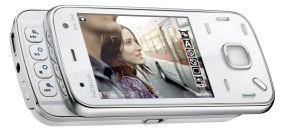 The successor to the N85, Nokia’s N86 bumps up the phone’s camera specs to 8 megapixels and features a wide-angle Carl Zeiss Tessar lens, with claims to SLR-like quality. There’s the usual N-series goodness too, such as access to all of Nokia’s Ovi web services (share on Ovi, Nokia Maps, Nokia Music Store, Contacts), along with support for the company’s N-Gage gaming platform, including dedicated gaming keys. As well as being a general upgrade from the N85 – utilizing the same 2.6 inch AM OLED screen – a welcome addition is the kick stand, a feature borrowed from the flagship N96 (see my BBC iPlayer on N96 review).
The successor to the N85, Nokia’s N86 bumps up the phone’s camera specs to 8 megapixels and features a wide-angle Carl Zeiss Tessar lens, with claims to SLR-like quality. There’s the usual N-series goodness too, such as access to all of Nokia’s Ovi web services (share on Ovi, Nokia Maps, Nokia Music Store, Contacts), along with support for the company’s N-Gage gaming platform, including dedicated gaming keys. As well as being a general upgrade from the N85 – utilizing the same 2.6 inch AM OLED screen – a welcome addition is the kick stand, a feature borrowed from the flagship N96 (see my BBC iPlayer on N96 review).
HTC Touch Diamond 2
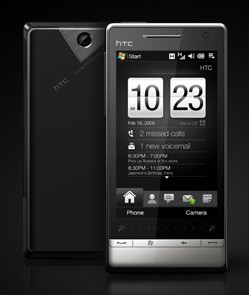 With the successor to the Touch Diamond (see our review), HTC’s Touch Diamond 2 continues in its attempt to put a finger-friendly UI on top of the aging Windows Mobile 6.1. This time round, however, HTC claims that its TouchFlo 3D UI goes a little deeper and that users should be able reach a lot more of the phone’s software features before being dropped into the standard and non-finger friendly Windows Mobile. To assist in its finger-friendly-ness, the size of the touch screen has been increased from 2.8 to 3.2 inches with WVGA (480 X 800 pixel) resolution. A neat looking feature is the new ‘zoom bar’, a touch sensitive area below the screen that can be swiped in order to zoom in and out of web pages and other documents, similar to the Palm Pre’s gesture bar. Additionally, the camera has been upgraded to 5 megapixels.
With the successor to the Touch Diamond (see our review), HTC’s Touch Diamond 2 continues in its attempt to put a finger-friendly UI on top of the aging Windows Mobile 6.1. This time round, however, HTC claims that its TouchFlo 3D UI goes a little deeper and that users should be able reach a lot more of the phone’s software features before being dropped into the standard and non-finger friendly Windows Mobile. To assist in its finger-friendly-ness, the size of the touch screen has been increased from 2.8 to 3.2 inches with WVGA (480 X 800 pixel) resolution. A neat looking feature is the new ‘zoom bar’, a touch sensitive area below the screen that can be swiped in order to zoom in and out of web pages and other documents, similar to the Palm Pre’s gesture bar. Additionally, the camera has been upgraded to 5 megapixels.
HTC Magic
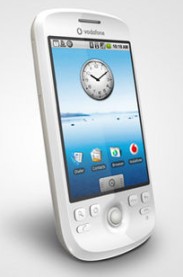 Another new device from HTC, this time the Magic runs the Google-led Android OS and is the second phone of its kind following the G1. The HTC Magic differs from the G1 in a number of ways, most notably ditching the slide out keyboard for an onscreen virtual QWERTY a la iPhone. T-Mobile has been replaced in favor of Vodafone as the time-limited exclusive carrier, and the phone’s camera software has been upgraded to include video recording capability. The HTC Magic is also a lot thinner than the G1 and overall looks quite stylish in comparison.
Another new device from HTC, this time the Magic runs the Google-led Android OS and is the second phone of its kind following the G1. The HTC Magic differs from the G1 in a number of ways, most notably ditching the slide out keyboard for an onscreen virtual QWERTY a la iPhone. T-Mobile has been replaced in favor of Vodafone as the time-limited exclusive carrier, and the phone’s camera software has been upgraded to include video recording capability. The HTC Magic is also a lot thinner than the G1 and overall looks quite stylish in comparison.
Sony Ericsson Idou
Even though this one wreaks of vaporware – even the Idou name isn’t final – Sony Ericsson’s latest handset announcement has some headline grabbing specs.
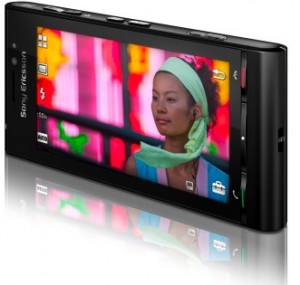 First up is the phone’s 12.1 megapixel camera. And while megapixels alone don’t guarantee good photos, it carries the Cybershot branding, so it’s likely to be decent enough. The Idou is another touchscreen affair — see the trend? — and when finished will utlize the new open source version of Symbian. From the looks of things, Sony Ericsson have put their own eye candy (and there’s plenty of it) on top of Symbian/S60, and from early hands-on videos the UI is both pretty and responsive. Hardware-wise, the handset is unsurprisingly thin, as you’d expect from a flagship SE device.
First up is the phone’s 12.1 megapixel camera. And while megapixels alone don’t guarantee good photos, it carries the Cybershot branding, so it’s likely to be decent enough. The Idou is another touchscreen affair — see the trend? — and when finished will utlize the new open source version of Symbian. From the looks of things, Sony Ericsson have put their own eye candy (and there’s plenty of it) on top of Symbian/S60, and from early hands-on videos the UI is both pretty and responsive. Hardware-wise, the handset is unsurprisingly thin, as you’d expect from a flagship SE device.
